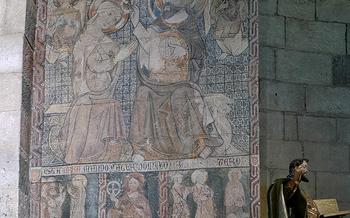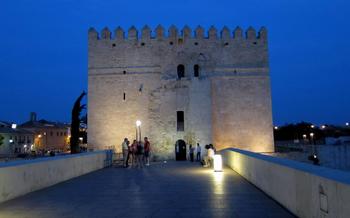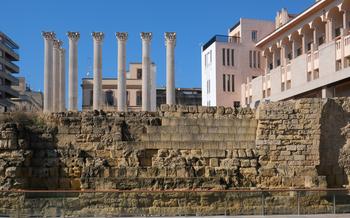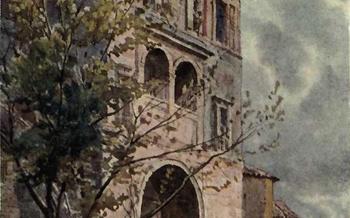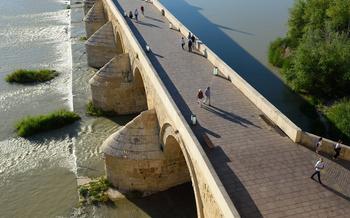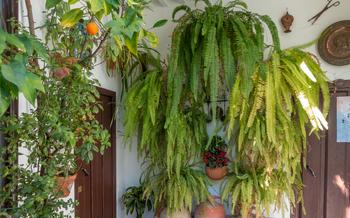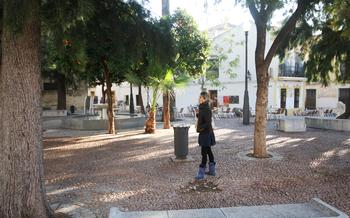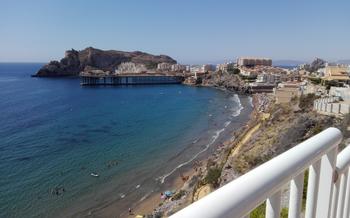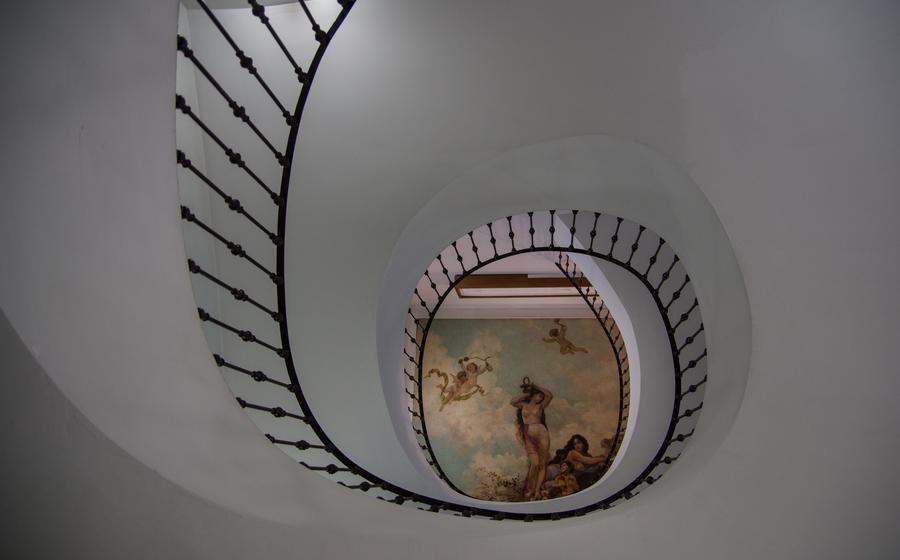
Museo de la Ciudad de Murcia
- Museo de la Ciudad de Murcia
- History of Murcia
- The Museum's Collection
- Temporary Exhibitions
- Guided Tours
- Accessibility
- Facilities
- Tips for Visitors
- Interesting Facts
- Virtual Tour
- Social Media
- Insider Tip
Museo de la Ciudad de Murcia
The Museo de la Ciudad de Murcia is in the heart of the city, in the Plaza de las Flores, and is housed in a beautiful 18th-century building known as the Casa Consistorial.
The museum was founded in 1927 and has been expanded and renovated several times over the years. It now occupies three floors and features a wide range of exhibits on the history of Murcia, from its founding by the Romans to the present day. The museum also contains a large collection of fine art, archaeological artifacts, and decorative arts.
Contact details Address: Plaza de las Flores 1, 30001 Murcia, Spain Phone: +34 968 25 98 15 Email: [email protected]
Opening hours The museum is open from Tuesday to Sunday from 10am to 2pm and from 5pm to 8pm. It is closed on Mondays and certain holidays.
Admission fees Admission to the museum is free of charge.
History of Murcia
The city of Murcia has a rich and varied history, dating back to the 8th century BC when it was founded by the Iberians. The city was later conquered by the Romans in the 2nd century BC and became part of the Roman province of Hispania Carthaginensis. After the fall of the Roman Empire, Murcia was ruled by the Visigoths and then by the Byzantines.
In 711 AD, Murcia was conquered by the Umayyad Caliphate and became part of the Emirate of Córdoba. The city flourished under Muslim rule, and many of the city's most famous landmarks, such as the Great Mosque of Murcia, were built during this period.
In 1243, Murcia was reconquered by the Christian forces of King Ferdinand III of Castile. The city became part of the Kingdom of Castile and was granted a royal charter. Murcia continued to prosper under Christian rule, and in the 16th century, it became the capital of the newly created Kingdom of Murcia.
In the 19th century, Murcia was affected by the Napoleonic Wars and the Spanish Civil War. However, the city has since recovered and is now a thriving modern city. Murcia is the capital of the autonomous community of Murcia and is one of the most important cities in southeastern Spain.
The Museum's Collection
The Museo de la Ciudad de Murcia houses a vast and diverse collection of artifacts and artworks that span the city's rich history. The collection is divided into three main sections: archaeology, fine art, and decorative arts.
The archaeological section features a wide range of artifacts from the prehistoric era to the Middle Ages. Highlights include a collection of Paleolithic tools, Roman mosaics, and Visigothic jewelry. The section also houses a number of artifacts from the city's Islamic period, including ceramics, metalwork, and textiles.
The fine art section of the museum contains a number of paintings, sculptures, and drawings from the 15th century to the present day. The collection includes works by some of Spain's most famous artists, such as El Greco, Francisco de Goya, and Joaquín Sorolla.
The decorative arts section of the museum features a variety of objects from the Middle Ages to the 20th century. The collection includes furniture, ceramics, glassware, metalwork, and textiles. Highlights of the section include a collection of 18th-century Murcian furniture, a collection of Islamic ceramics, and a collection of Art Nouveau glass.
Temporary Exhibitions
The Museo de la Ciudad de Murcia often hosts temporary exhibitions in addition to its permanent collection. These exhibitions typically focus on a specific theme or topic related to the history, culture, or art of Murcia.
Past exhibitions have explored topics such as the history of the city's silk industry, the work of local artists, and the impact of the Spanish Civil War on Murcia.
Current exhibitions include "Murcia in the Middle Ages," which showcases artifacts from the city's medieval past, and "The Art of Francisco Salzillo," which features sculptures and paintings by the renowned Murcian artist.
To find out about upcoming exhibitions, visitors can check the museum's website or social media pages. The museum also offers a monthly newsletter that provides information about upcoming events and exhibitions.
Guided Tours
The Museo de la Ciudad de Murcia offers guided tours in Spanish and English to enhance visitors' understanding and appreciation of the museum's collection. These tours are led by knowledgeable and enthusiastic guides who provide insightful commentary on the museum's history, its collection, and the significance of the exhibits.
Availability of Guided Tours
Guided tours are available on a regular basis, with varying schedules depending on the time of year and demand. Visitors are advised to check the museum's website or inquire at the information desk for the current tour schedule. Tours typically last for approximately one hour and cover the highlights of the museum's collection.
Languages Offered
Guided tours are primarily offered in Spanish, but English tours are also available upon request. Visitors who prefer a tour in English should make a reservation in advance to ensure availability.
Cost of Guided Tours
The cost of a guided tour is included in the standard admission fee to the museum. There is no additional charge for guided tours, making it an excellent value for visitors seeking a more in-depth experience.
How to Book a Guided Tour
To book a guided tour, visitors can either reserve online through the museum's website or inquire at the information desk upon arrival. Online reservations are recommended to secure a spot, especially for popular tour times.
Accessibility
The Museo de la Ciudad de Murcia is committed to making its exhibitions and programs accessible to all visitors.
Wheelchair accessibility
The museum is wheelchair accessible, with ramps and elevators providing access to all floors. There are also accessible toilets located throughout the museum.
Accessibility for people with visual impairments
The museum offers a variety of services for visitors with visual impairments, including tactile maps and models of the museum, audio guides with descriptions of the exhibits, and magnifying glasses.
Accessibility for people with hearing impairments
The museum offers sign language tours for visitors with hearing impairments. It is also possible to request a written transcript of any audio or video presentations.
Assistance for people with disabilities
The museum staff is always happy to assist visitors with disabilities. They can provide information about the museum's accessibility features, help with directions, or arrange for assistance with any of the museum's programs or services.
Facilities
The Museo de la Ciudad de Murcia offers a range of facilities to enhance visitors' experience. The gift shop sells a variety of souvenirs, including books, postcards, and replicas of artifacts from the museum's collection. The café provides a relaxing space to enjoy a coffee or a light meal, with both indoor and outdoor seating. The cloakroom allows visitors to store their belongings securely while they explore the museum. Toilets are available on all floors of the museum, including accessible toilets for people with disabilities.
Tips for Visitors
Best time to visit
The best time to visit the Museo de la Ciudad de Murcia is during the shoulder seasons (spring and autumn), when the weather is mild and there are fewer tourists. The museum is open year-round, but it is closed on Mondays and major holidays.
What to wear
The museum is air-conditioned, so you can wear comfortable clothing regardless of the weather outside. However, it is important to remember that the museum is a religious site, so it is advisable to dress respectfully.
What to bring
You may want to bring a camera to capture the many interesting exhibits, as well as a notebook and pen to take notes. You can also bring your own food and drinks, as there is no café on-site.
Photography and videography
Photography and videography are permitted in the museum, but flash photography is not allowed. You are also not allowed to film or photograph any of the museum's staff or visitors without their permission.
Interesting Facts
The Museo de la Ciudad de Murcia is home to a number of unique and unusual artifacts. One of the most striking is a 13th-century bronze statue of a horse and rider. The statue is thought to be of Islamic origin, and it is one of the few surviving examples of Islamic art from the period.
Another highlight of the collection is a 16th-century painting of the Battle of Lepanto. The painting, which is attributed to the artist Juan de Juanes, depicts the Spanish victory over the Ottoman Empire in the Battle of Lepanto. It is a powerful and moving work of art, and it is one of the most popular exhibits in the museum.
The museum also has a number of behind-the-scenes stories to tell. One of the most fascinating is the story of the museum's foundation. The museum was founded in 1912 by a group of local intellectuals and artists, who were determined to preserve the city's rich cultural heritage. The museum's first home was in a small building in the city center. However, the collection quickly outgrew the space, and in 1925, the museum moved to its current location in the Palacio Almudí.
The Museo de la Ciudad de Murcia has also been visited by a number of famous people over the years. In 1929, the museum was visited by King Alfonso XIII and Queen Victoria Eugenia. In 1962, the museum was visited by President John F. Kennedy and his wife, Jacqueline Kennedy Onassis. And in 1977, the museum was visited by Pope John Paul II.
Virtual Tour
The Museo de la Ciudad de Murcia offers a comprehensive virtual tour that allows visitors to explore the museum's collection and exhibitions from the comfort of their own homes. The virtual tour is available on the museum's website and is compatible with various devices, including computers, smartphones, and tablets.
The virtual tour is a great way to learn more about the museum's collection and history. It features high-quality images of the museum's artifacts, including close-ups and detailed descriptions. Visitors can navigate through the virtual tour using a user-friendly interface, which includes interactive maps and floorplans.
The virtual tour also includes audio commentary and video clips that provide additional information about the museum's collection and history. Visitors can listen to the commentary in English or Spanish. The virtual tour is a valuable resource for anyone interested in learning more about the Museo de la Ciudad de Murcia and its collection.
To access the virtual tour, visit the museum's website and click on the "Virtual Tour" link. The virtual tour is free of charge and does not require any registration.
Social Media
The Museo de la Ciudad de Murcia has an active presence on social media, providing visitors with the opportunity to connect with the museum, learn about upcoming exhibitions and events, and share their own experiences.
The museum's Facebook page (@MuseodelaCiudaddeMurcia) is a hub for all the latest news and information, with regular posts about new acquisitions, temporary exhibitions, and educational programs. Visitors can also share their photos and stories, and connect with other museum enthusiasts.
On Twitter (@MuseodeMurcia), the museum shares short updates on upcoming events, highlights from the collection, and interesting facts about the museum's history and architecture.
Instagram (@murciamuseo) is a visual feast, with stunning photos of the museum's collection, as well as behind-the-scenes glimpses into the museum's work.
The museum also hosts regular social media events and contests, offering followers the chance to win prizes, share their creativity, and engage with the museum in a fun and interactive way.
Insider Tip
A Secret Spot in the Museum
In the heart of the Museo de la Ciudad de Murcia, tucked away in a secluded corner, lies a hidden gem that often goes unnoticed by visitors. It is a small, unassuming room, filled with shelves upon shelves of ancient books and manuscripts. This is the museum's rare book and manuscript collection, and it is a treasure trove of forgotten knowledge and historical insights.
Here, you can find handwritten letters from long-deceased kings and queens, beautifully illustrated manuscripts from the Middle Ages, and rare editions of books that have shaped the course of human history. It is a place where time seems to stand still, and where the stories of the past come to life.
If you are passionate about history and literature, or if you simply enjoy the thrill of discovering hidden treasures, then this secret room is a must-see. Ask a member of the museum staff to show you the way, and prepare to be amazed by the wonders that await you within.

